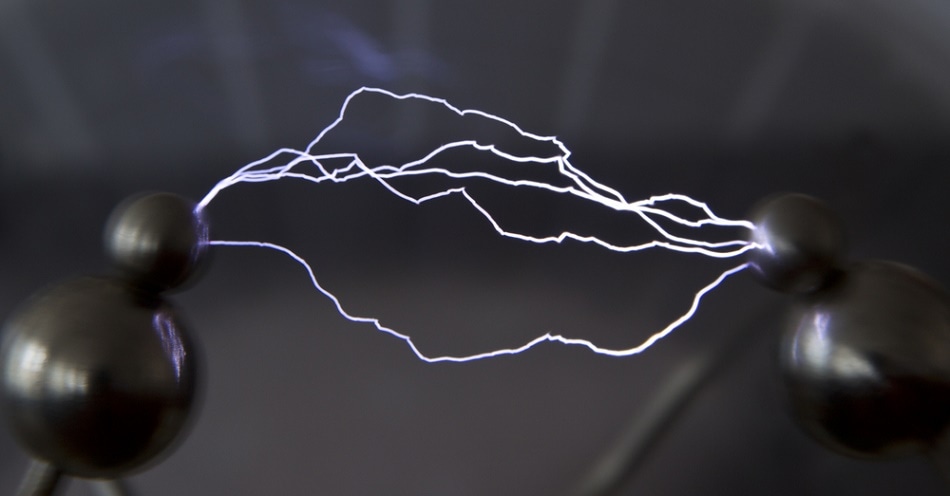Feb 8 2017
 Lehrer/Shutterstock.com
Lehrer/Shutterstock.com
One of the fascinating scientific findings of modern physics is the phenomenon of superconductivity; a state in which electrical currents move through a material in an unobstructed manner.
Industries, governments, and science and health care centers have used superconductivity in various practical applications ranging from MRIs in hospitals to the particle accelerators’ cavities in which researchers analyze the fundamentals of matter. Yet, there are also difficulties posed upon practical utilization of superconductivity.
Researchers working to incorporate superconductivity in small-sized, portable systems possibly face the greatest difficulties. John Durrell, a Cambridge University academic and superconductivity expert, and his colleagues have demonstrated that a portable superconducting magnetic system - which is a high-performance alternative for a traditional permanent magnet - has the ability to achieve a 3-tesla level for the magnetic field.
The outcomes of the study have been reported this week in Applied Physics Letters, published by AIP Publishing.
According to Durrell, his team’s research in large part developed from the innovative discovery of Roy Weinstein, a physicist at the University of Houston.
Roy Weinstein has demonstrated the way in which traditional electromagnets and pulsed field magnetization can be exploited to initiate superconducting magnetic fields that can be “captured” and maintained as part of a superconductive arrangement, eliminating the need for huge and costly superconducting magnets for “activating” portable systems.
Additionally, Durrell indicated that the most important factor is that the research team took the advantage on other new and inexpensive technologies, particularly for cooling.
For example, the leap with advances in cryogenics, allows you to do interesting things in other areas, too. There is a lot coming together to make this possible.
John Durrell, Cambridge University
Although a 20-tesla magnetic field can be generated by huge industrial-size superconducting systems, the 3-tesla magnetic field generated by Durrell’s team is new for a portable system.
A few years back when Durrell and his colleagues cast an eye over Weinstein’s research, they were eager to know what could be done. Weinstein showed that by carrying out traditional external electromagnetic pulsing of a medium, a magnetic field could be “captured” in a superconductor by means of a much smaller external magnetic field than it was believed possible earlier.
In Weinstein’s research, Yttrium Barium Cuprate doped with uranium was subject to an irradiation treatment. Durrell and his colleagues searched for a material of lesser cost and selected Gadolinium Barium Cuprate but without uranium doping. According to Durrell, it was team investigator and lead author Difan Zhou who proposed the concept of extending Weinstein’s discoveries. He further added that the research, which was completed within a period of two years, has been fruitful.
It was a surprise to us that we managed to see in a not-quite-so-cutting-edge-material the same giant flux leap effect as Roy Weinstein demonstrated. The key thing that made this possible is that we have looked at what Roy has done to get it to work but for this kind of portable system. Before we were using conventional superconducting magnets to charge our bulks. This will make access to these high fields cheaper and more practical.
John Durrell, Cambridge University
Developments in the area of highly efficient and inexpensive cooling, i.e. the cryogenic system, were also the main aim of Durrell and his team’s work. Noteworthy is the fact that it is important to maintain the superconducting sample cool for both the charging and sustaining phases of the magnetic field, otherwise the superconductivity state is lost.
More recently, the private sector has developed lightweight and inexpensive cryogenic systems. Durrell and his team have employed a cooling system developed by Sunpower Inc., which is a US firm. Durrell stated that this lower weight and the comparatively low cost can make portable superconductivity a reality in different types of products.
Durrell indicated that the combined effect of these new technological opportunities is “essentially a better, portable permanent magnet—one with a 3-tesla rather than 1-tesla magnetic field. The obvious interest in that is that you could use that to make a smaller and lighter motor.”
Durrell added that the use of inexpensive MRI and NMR systems for hospitals can be highly probable because such systems normally use large superconducting magnets. In addition, magnetically targeted drug delivery systems in human as well as veterinary applications can also be made possible.
Durrell and his colleagues have proposed to carry out more testing for higher overall efficiency and more magnetic power. For this research, the team has received outstanding support from The Boeing Company, and Durrell perceives that it is a convincing example of the outcomes of the partnership between a company and an academic lab in terms of basic research.